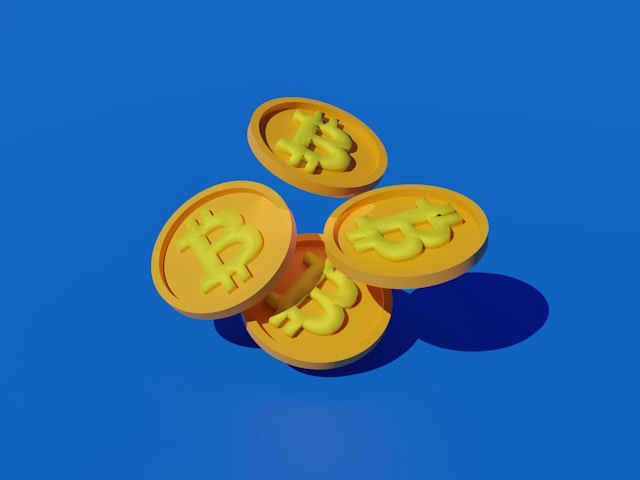Stablecoins: A Safe Investment Strategy in the Crypto World

If you’ve been keeping an eye on the volatile world of cryptocurrency, you may have heard about the rising star of the market: stablecoins. These gems are gaining increased attention and traction for their unique property of retaining a stable value amidst the turbulence that is often characteristic of the crypto scene. But, you might be wondering, what exactly are stablecoins? And how can they serve as a secure investment strategy?
Stablecoins are a class of cryptocurrencies that aim to maintain a stable value against a targeted price level, typically linked to a reserve of traditional fiat assets. For example, one unit of a stablecoin could be pegged to the value of one US dollar. The primary appeal of stablecoins is their blend of the instant processing and security features of cryptocurrencies, and the predictable valuing of fiat currencies.
This original combination offers an unusual advantage; it drastically mitigates the volatile swings that can make investing in more conventional cryptocurrencies a risky business. In a nutshell, stablecoins can be your elixir in an otherwise unpredictable market.
What are stablecoins and how do they work?
Stablecoins are a type of cryptocurrency designed to provide price stability, making them a viable option for saving, transactions, and predictable long-term investments. They achieve this stability by being pegged to a reserve of assets such as a certain fiat currency like the dollar, euro or yen, or even commodities like gold or silver.
Imagine a seesaw; on one end, you have conventional cryptocurrencies like Bitcoin or Ethereum, the prices of which can skyrocket or plummet in a matter of hours. On the other end, you’ve got fiat currencies—steady, predictable, but not without their inflation risks over the long run. Somewhere in the middle of these two extremes, you’ll find stablecoins.
The fundamental concept of stablecoins is quite straightforward. Each stablecoin token is essentially a claim on the underlying asset to which it is pegged. For instance, if a stablecoin is pegged to the U.S. dollars, it means you have a crypto token worth one U.S. dollar. To maintain this 1:1 ratio, the equivalent amount in dollars must exist in the stablecoin issuer’s reserves. In simpler terms, if there are 1 million stablecoins in circulation, there must be at least 1 million dollars in the reserve.
This mechanism is the foundational talisman against the volatility inherent in most cryptocurrencies, allowing you to enjoy the benefits of the crypto world without fearing drastic shifts in your investment value. It’s an interesting hybrid for those looking for a bridge between the traditional finance world and its modern, decentralized counterpart.
Why are stablecoins considered a safe investment in the crypto market?
Just like a sailor needs an anchor to keep the ship steady against the waves, investors in the volatile crypto market need stablecoins to maintain a solid footing amidst the stormy financial seas. You see, stablecoins offer a sense of security that is often absent in cryptocurrency investments. But you might be wondering, why exactly are they perceived as such a safe bet?
Well, unlike traditional cryptocurrencies, such as Bitcoin or Ethereum, whose value can fluctify wildly in response to market trends, stablecoins are designed to have a stable value. They achieve this by being pegged or linked to a reserve of stable assets, which could include fiat currencies like the US Dollar or the Euro, or commodities such as gold. That means, for instance, if a stablecoin is tied to the US Dollar, it will typically hold a value of $1, regardless of the market conditions.
This inherent stability makes stablecoins a safe haven for investors during periods of extreme volatility in the crypto market. When the value of their crypto assets is falling, investors can convert their holdings into stablecoins to avoid further losses. Once the market starts to recover, they can then convert these stablecoins back into regular cryptocurrencies to reap the rewards of the upswing. Hence, stablecoins act as a shield against the unpredictable tides of the crypto market, thereby lowering investment risks.
Furthermore, this stability also makes stablecoins an ideal medium of exchange, allowing users to carry out transactions without worrying about the value of their coins dropping before the transaction is completed. This reliability in value makes them an excellent tool for digital exchanges, crypto lending platforms, remittances, and more.
Lastly, stablecoins, thanks to their link to traditional financial systems, can also play a key role in ushering institutional investors into the world of cryptocurrencies. Due to regulatory oversight and the stability offered, these coins can provide a smoother transition and more familiar territory for institutional investors venturing into the cryptocurrency world for the first time.
In conclusion, stablecoins seem to offer a way to enjoy the myriad benefits of cryptocurrencies – from fast transaction times to decentralization – while avoiding some of their notorious volatility. And as a result, they are increasingly viewed as the smart, safe bet in a market known for wild price swings and unpredictability.
Which stablecoins are the best for investment purposes?
When it comes to investing in stablecoins, the decision is often dependent on your specific preferences and financial objectives. However, there’s no denying that some stablecoins provide more efficient and reliable investment opportunities than others. Let’s explore some prime examples.
Tether (USDT): Tether is arguably the most well-known and extensively traded stablecoin in the crypto market. As it’s pegged directly to the US dollar, Tether provides a level of stability that few other cryptocurrencies can match. Moreover, its wide acceptance and proven track record make it a favored choice for both beginner and veteran investors.
USD Coin (USDC): USD Coin, backed by leading tech companies like Circle and Coinbase, offers a rare combination of stability and security. Its value is pegged to the dollar, ensuring its stability, and the backing by recognized companies gives investors confidence in its safety and longevity. USDC is also governed by US financial laws, giving it an added level of security.
Binance USD (BUSD): Binance USD is a newer entry to the stablecoin arena, but it’s already made significant strides thanks to its affiliation with Binance, the world’s largest cryptocurrency exchange. This linkage allows BUSD to offer significant advantages in liquidity and acceptance. Further, its value is audited by an independent party to reassure investors.
Above all, remember, your investment decisions should depend on your financial goals, risk tolerance, and understanding of the digital asset market. Stablecoins can serve as a secure hedge against volatility, but it’s essential to navigate this domain with clear strategy and informed choices.
Reference: https://hedera.com/learning/tokens/what-is-a-stablecoin







